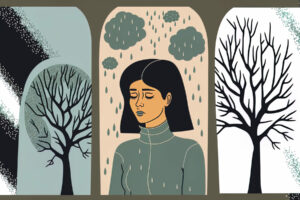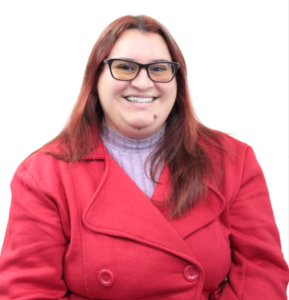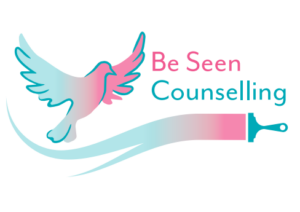
As the leaves change and daylight hours dwindle, many people find themselves feeling a shift in mood and energy levels. For some, this seasonal transition can trigger a condition known as Seasonal Affective Disorder (SAD), often referred to as the “winter blues.” Understanding SAD, its symptoms, and effective treatments can empower individuals to manage their mental health during the colder months.
What is Seasonal Affective Disorder (SAD)?
Seasonal Affective Disorder is a type of depression that occurs at specific times of the year, most commonly in the fall and winter when there is less natural sunlight. While it is less prevalent during the spring and summer, some individuals can experience SAD during these seasons as well.
SAD is believed to be linked to the body’s circadian rhythms, which are heavily influenced by exposure to natural light. The reduction in sunlight can disrupt these rhythms, leading to biochemical changes in the brain and altering serotonin levels—a crucial neurotransmitter responsible for regulating mood.
Common Symptoms of SAD
The symptoms of Seasonal Affective Disorder can range from mild to severe and may include:
Treatment Options for SAD
Fortunately, there are various treatment options available for managing Seasonal Affective Disorder. It’s important to tailor these treatments to individual needs, and consulting with a mental health professional can often help determine the best course of action.

A Client’s experiences
“As someone going through Seasonal Affective Disorder (SAD), the onset of fall feels like a slow descent into a cloudy, dim place that seems to suffocate my spirit. The days grow shorter, and I can feel the weight of a heavy blanket of sadness settling over me, making even the smallest tasks feel monumental. I wake up in the morning feeling drained, as if I haven’t slept at all, and the thought of facing the day often overwhelms me. Activities that once brought me joy, like spending time with friends or enjoying my hobbies, now seem bland and pointless. I often find myself grappling with feelings of isolation and hopelessness, as though I’m trapped in a cycle that I can’t escape. The absence of sunlight compounds it all, making me crave the warmth and brightness I used to take for granted. It leaves me in a constant battle between wanting to reach out for help and the sinking sensation of not being understood.
When I first considered therapy, I was hesitant, unsure if it could truly help me navigate the overwhelming feelings brought on by Seasonal Affective Disorder. However, I realized I couldn’t keep spiralling downward without seeking support. From my very first session, it was a relief to talk openly about my experiences—the sadness, the fatigue, and the sense of disconnection I felt from the world around me. My therapist provided a safe space, where I didn’t feel judged and was encouraged to express my feelings honestly. Through our conversations, I learned practical coping strategies to incorporate into my daily routine, like establishing a healthier sleep schedule and committing to regular physical activity.
One of the most impactful aspects of therapy for me has been the person-centered approach my therapist employs. It was a revelation to be in a space where I could share my thoughts and feelings without fear of judgment. Just knowing that someone was there to listen, fully present and empathetic, made all the difference. In our sessions, I could pour out my heart, expressing the heaviness of my sadness and the confusion that often accompanied it. My therapist’s genuine understanding and acceptance created a safe environment where I felt valued and respected.
I was encouraged to explore my feelings at my own pace, which made me feel empowered rather than pathologized. The act of simply being heard alleviated so much of my internal burden; it was like shedding a weight I had been carrying for far too long. With each session, I felt more comfortable expressing myself and less alone in my struggle to foster trust but also encouraged me to develop a better understanding of myself. It transformed my experience of therapy from one of dread to a hopeful journey toward healing.
Cognitive Behavioral Therapy (CBT) helped me reframe my negative thought patterns, enabling me to recognize and challenge the hopelessness that often clouded my mind. With my therapist’s guidance, I began to set small, achievable goals that gradually reignited my sense of purpose and motivation. Therapy also reminded me that I wasn’t alone in my struggles. Just knowing someone understood my feelings made a significant difference. After months of hard work and reflection, I felt more equipped to manage my symptoms, embrace the seasons, and reclaim joy in my life. Therapy has been instrumental in my journey, transforming the way I view myself and teaching me valuable tools to navigate not just the winter blues, but life as a whole.” (Anonymous)

Conclusion
Seasonal Affective Disorder can significantly impact an individual’s quality of life during the fall and winter months. By understanding its symptoms and available treatments, individuals can take proactive steps to manage their mental health during this challenging season. Whether through light therapy, therapy, medication, or lifestyle changes, there are various approaches to alleviating the “winter blues.” If you or someone you know is struggling with symptoms of SAD, reaching out to a mental health professional can be the first step towards a brighter, healthier season ahead. Remember, you’re not alone, and help is available.

Hi there, my name is Carina,
I support survivors of domestic violence / Intimate partner violence, to understand and process the emotional and psychological symptoms so that you live your life feeling safe in your own skin, gain peace and joy in everyday moments and trust yourself and others again.
Camberwell
Southwark
London SE5 7HN

©BeSeenCounselling2024
©2025
Be Seen Counselling